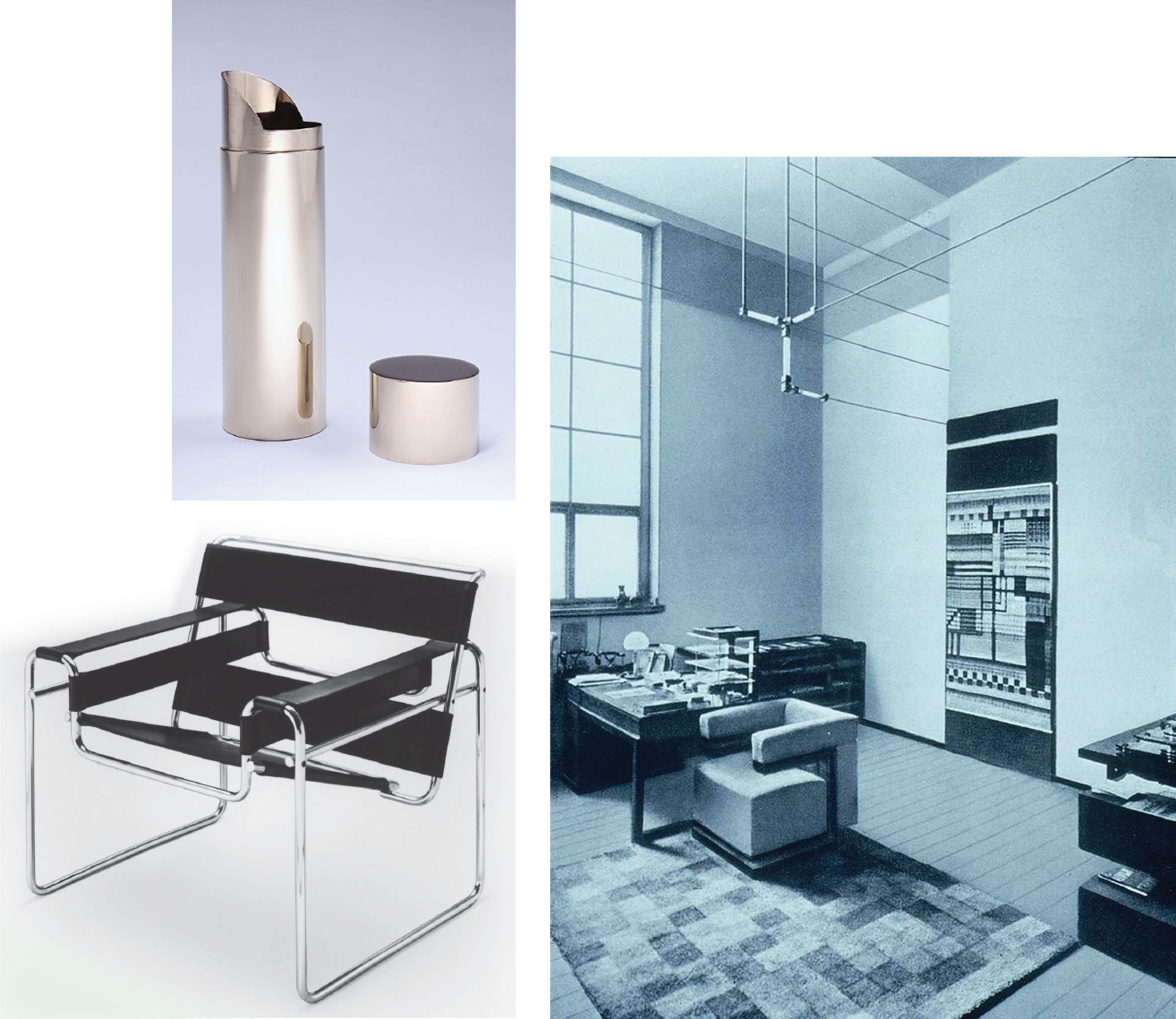Living in the Past: Modern Design for Everyday Use
European design movements of the early twentieth century had a lasting impact on everyday lifestyles. Many ordinary elements of living, from apartment buildings to interior furnishings, were transformed by modernist experimentation. The Bauhaus (or House of Building), an institute founded in Germany by architect Walter Gropius in 1919, exemplified modern design at its most influential. It attracted an array of highly talented artists, designers, architects, and students, including the Russian painter Wassily Kandinsky, the Swiss artist Paul Klee, and the Hungarian-Jewish photographer and painter László Moholy-Nagy.
The instructors and students at the Bauhaus sought to revolutionize product design by unifying art, craft, and technology. They argued that everyday objects should reflect the highly rationalized, industrialized, and modern society in which — and for which — they were made. Bauhaus adherents believed that form should follow function and that, as director Ludwig Mies van der Rohe put it in a famous aphorism, “less is more.” The results were streamlined, functional designs stripped of all ornamentation that were nonetheless works of great style and lasting beauty.
No everyday item was too insignificant to be treated as an object of high design. The industrial ethos of the Bauhaus was brought to bear on textiles, typography, dishware, and furniture. The famous steel tube and leather “Wassily chair,” created by architect and designer Marcel Breuer, exemplified Bauhaus concepts and remains an icon of modernism. Such goods were mass-produced and marketed at affordable prices, bringing high-concept design into the lives of ordinary Europeans. Bauhaus architects applied the same principles in designing buildings, from factories to working-class housing projects and private homes.
In 1933 Adolf Hitler and the Nazi Party, zealous opponents of modern art of all kinds, shut down the Bauhaus. Many of its prominent teachers and students fled persecution. Gropius, Breuer, Mies, and numerous others moved to the United States, where they helped spread Bauhaus ideas around the world after the end of the Second World War.


QUESTIONS FOR ANALYSIS
Question
7MUEz7VzZFDXZMC+J1/Zrz52uD94NledO4ZofKbZJ9AynRbVSoUIUmMzqQAwt+omkzobDFM3VMAslhqd6DM/stftEoOR5bux1guom1j+ut4OBOSptbC3b1B0Y0kiU4vqDo8W5Prt0d+EU5MoNFSfTckecWGP11ODQuestion
BEVy1pKsXGD8oTE/LwjOiwFunypPNxZtpF1+CB6jS1hoio/yPtH8OVVSft8EumVtbGe+2o3WU2xMDrZJa1edyKbppqPsJ484xKOx02XTahfmalHBBV21olWcA2bQ5Jw5tYsGwb6rHrEABsJlWy2FZ+INji0A2idU